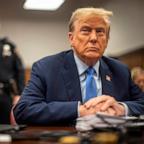State fairs are in a fair state
ST. PAUL -- Just a few blocks from the Giant Slide and still-shuttered Cheese on a Stick stand on the 320-acre Minnesota State Fairgrounds, Joe Barrett and his grandsons prepare The Big Pepper for yet another season.
"We'd be here, whether there was a recession or not," says Barrett, who has been a food vendor at the USA's second-largest state fair for the past 30 years. Once a Pronto Pup purveyor, Barrett has built his green pepper-shaped shack, which sells the vegetable stuffed and fried, into a beloved gathering place; he often sees the same faces year after year.
Whether customers will return to the Minnesota State Fair — or one of the dozen or so other state fairs taking place in the two weeks before Labor Day — in more difficult financial times is yet to be seen. The lingering recession has forced fair organizers around the country to seek new sponsors, adjust their ticket discounting and marketing, and beg concessionaires to hold their prices.
Many have jumped on the "staycation" bandwagon. In Minnesota, where the fair started Thursday, fliers promise fairgoers a "mini vacation" with "more free stuff than you can shake a pickle-on-a-stick at." The Arizona State Fair, held in mid-October and early November, when the heat drops, features deals and discounts prominently on its website.
Aggressive marketing helped set record attendance at the North Dakota State Fair, held in late July, general manager Bob Wagoner says. "We pitched very hard that in these times, people should take advantage of the great opportunities in-state."
The fair spent more money on billboards in the state's far-flung rural areas, advertising early. The strategy worked: While fewer visitors came from other states, the number of North Dakotans who attended the nine-day fair increased. "When times are difficult, everyone's looking for a bargain, especially one that the entire family can take advantage of," Wagoner says.
To lure families, the Indiana State Fair added five extra days in early August to avoid overlapping too much with kids going back to school. The gamble paid off, with attendance exceeding projections of 900,000 by 74,000, spokesman Andy Klotz says.




